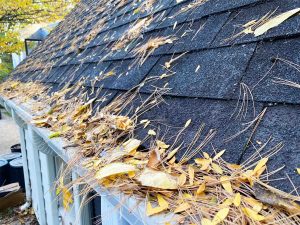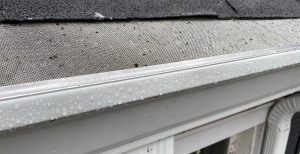Editor’s note: The following is a copy of Consumer Reports press release announcing its first-ever testing of gutter guard systems. We removed the section summarizing leaf blowers from the press release.
Consumer Reports Finds Lower Prices and Comparable Performance on Leaf Blowers and Gutter Guards in Time for Fall Spruce Ups
Strong Selection for Shoppers Ranging From DIY Gutter Systems and Top Electric Leaf Blowers
YONKERS, N.Y., Aug. 3 /PRNewswire-USNewswire/ — The latest issue of Consumer Reports rates the best leaf blowers and gutter guards to ensure that yards and rain gutters are tidy for the Fall season. More than 2,600 pounds of leaves were blown away by testers to reveal a $60 Toro electric leaf blower that performed comparably to the more powerful and costly gas blowers. Gutter guards were exposed to 480 days of outdoor elements and the Amerimax gutter guards were a top pick for do-it-yourselfers. At .30 cents per foot they beat out many professional installed systems and could save homeowners cash.
“Consumers will find lots of confusing promises out there for leaf blowers and gutter guards,” said Bob Markovich, senior home editor for Consumer Reports. “We found several top-value blowers for both small and larger properties. And we found some big differences in gutter guards when it came to keeping out leaves—and keeping water where it belongs.”
The full report, which features the full ratings on gutter guards and leaf blowers, appears in the September issue of Consumer Reports and online at www.ConsumerReports.org.
Gutter Guards: DIY Systems Beat the Pros
Consumer Reports ran 16 months of outdoor testing to find the best systems to keep gutters leaf free and found that a low-priced screen may be all it takes. Tests included professionally installed and do-it-yourself products sold at Home Depot, Lowe’s, and other major retailers to see how well they kept out maple leaves, pine needles, and other gutter-cloggers.
Consumer Reports testers saw some big differences among types of systems. Most professionally installed systems often use a surface-tension design, where water is supposed to cling to the surface and flow into the gutters while leaves pass over and fall to the ground. Though all were impressive at shedding debris, even the top-scoring LeafFilter screen was only middling at containing a severe downpour.
If homeowners want convenience it will cost them. At $20 to $30 per foot, the professionally installed systems tested would cost $3,000 to $5,000 for roughly 160 feet needed on an average-sized home. But homeowners will pay less than $100 if they install the CR Best Buy Amerimax 85198 or 854054 themselves. They’ll still save a bundled if they add in the roughly $100 to $500 a contractor will change to put in a do-it-yourself system.
Most do-it-yourself gutters guards were easy to install although it’s likely to require climbing on a ladder—a dangerous activity. For inserts, simply cut the foam or bend the brush and press it into the gutter. But none of the inserts were good at keeping out debris. The Raingo RW115 let water pour out over the sides of the gutter.
How to Choose
Inspect the rest of the gutters. Have a pro check for clogs, corrosion, broken fasteners, proper pitch, and gaps between connections and between gutters and fascia boards. The LeafGuard and K-Guard are all-in-one systems that include the gutters and guards, an option if existing gutters are worn.
Pick the right screen. Fine-mesh screens like the top-scoring LeafFilter and Gutterglove Pro outperformed screens with larger holes. But the Gutterglove was relatively pricey and hard to install and isn’t meant for flat or gambrel roofs.
Check the fine print. Be sure that any system won’t void a roof or gutter warranty. Also check suggested maintenance. LeafFilter may need brushing in high-pollen areas and Amerimax must be checked for debris; both of those steps mean climbing a ladder or calling a pro.
Play it safe. Ladder injuries are linked to approximately 200 to 300 deaths and an estimated 200,000 emergency-room visits each year. Use a sturdy Type 1A extension ladder made of fiberglass if working near electrical lines. Always face the ladder when climbing and descending and never go beyond the highest recommended step or reach more than 1 foot to either side of the ladder.
SEPTEMBER 2010
Consumers Union 2010.
SOURCE Consumer Reports
https://www.consumerreports.org






